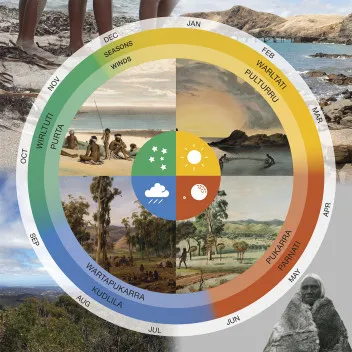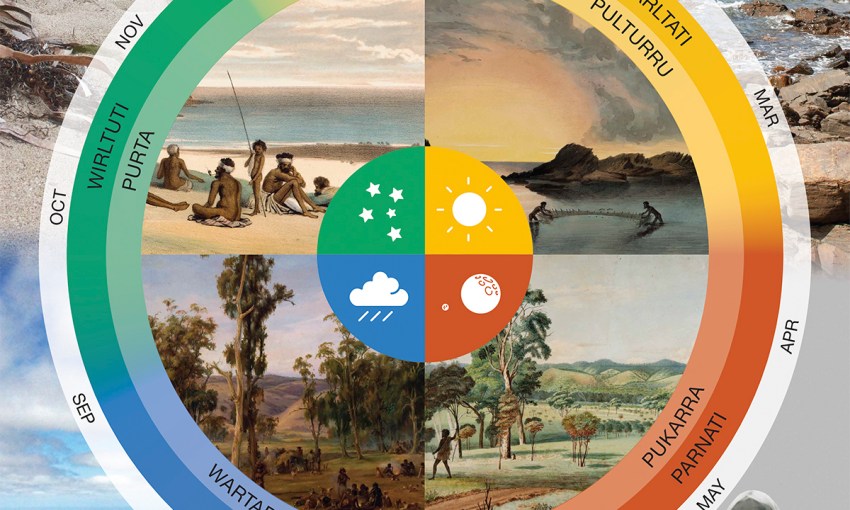Having observed their environment over thousands of years, Australia’s indigenous communities have developed an intricate understanding of the seasons.
In the garden: Australia’s true seasons
Summer, autumn, winter and spring — are these seasons appropriate across the breadth and depth of Australia? Not so, according to the indigenous people who have lived here long before the country was settled by English colonists. Communities had already worked out their local seasons in the year.
On the CSIRO’s website you will find nine indigenous communities’ local weather and ecological knowledge presented, while on the Bureau of Meteorology’s website you will find a section called Indigenous Weather Knowledge, featuring 13 more indigenous communities around Australia and the local knowledge they have built up over hundreds, or even thousands of years.
Among the communities, some in the far north of Australia feature as few as two seasons, while several have six seasons in the year, determined not only by temperature but also by wind, rain and humidity or “hot and sticky” times.
The seasons are also defined by indicators such as the abundance of foods including kangaroos, seafood, and various plants that are ready to eat.
One of the communities featured on the Bureau of Meteorology’s site is that of the Kaurna people, whose lands are in South Australia along the eastern shores of Gulf St Vincent and around the Adelaide Plains.

The Bureau worked closely with the elders of the Kaurna people to develop the information which features on the calendar, which was launched in June 2017.
Four seasons are defined for the Adelaide and surrounding regions:
Warltati (Summer)
The Kaurna season of Warltati relates to January, February and March. Indicators of this season are warlta (hot, heat and warmth), piturru (thunder), karntu (lightning) and pulturru (dry breeze). The astronomical indicator for Warltati is tirntu (the sun). Plant and animal indicators include the kangaroo, being the chief supply of food at this time, and yabbies emerging from the mud.
In this season, a conference would be held for all nations to exchange knowledge and trade and there would be controlled burning of fires in foothills. If the Murray Darling basin floods, the grey teal ducks can be seen flying north.
Parnati (Autumn)
This season relates to April, May and June. In April, Parna, a star near the moon on the lower left side, sparkles. Cold mornings see kudmu (fog/dew) on the ground. Being the period of highest rainfall, this season sees kuntu and yartala (flooding), restricting movement across the land, while also waadlawarnka (fallen trees).
There are many plant and animal indicators for Parnanti. Mullet can be netted in the shallows during high tides, while yellowfin whiting, mulloway and salmon trout can be caught in estuaries. Reed beds turn to boggy swamps with plentiful birdlife. Small stone fruits, possums, kangaroos, wallabies and bandicoots are caught and eaten. Wild tobacco leaves can be chewed and other food sources include roots, yams, wild cabbage and seeds.
In this season wattle gums are carved to build canoes and shelters. People move inland towards foothills, creating shelters from fallen limbs. Skin rugs and seaweed cloaks are made for Kudlila (winter).
Kudlila (Winter)
Kudlila is the winter season of July, August and September. Winter is when the earth is washed (kudlinthi) and conditions are windy (waitpi). Plant and animal indicators for the season see vegetables and grubs eaten, bloodworms in the mud and water birds nesting.
Grubs are collected from west sclerophyll scrub covering the Mount Lofty Ranges, while gum from Acacia trees is collected for eating.
Wirltuti (Spring)
Wirltuti relates to October, November and December. Wirltuti is indicated by the position of the Southern Cross constellation in October. In Kaurna culture, the Southern Cross is referred to as Wirltu (eagle’s foot or eagle). Spring sees wild, warm temperatures, pukarra (northwest wind), warri (wind), piturru (thunder) and karntu (lightning). The word purta (to burn and blaze or rage like a storm) refers to the seasonal winds.
During this period, eggs of young birds and lizards can be eaten. Blue crabs are caught and garfish are abundant in the shallows, while shellfish and crustaceans are collected. The young leaf heart of the grass tree is eaten raw. Snakes come out of hibernation, the local species being tiger, brown and black snakes, as well as lizards.
People head back towards the coast in this period, cure skins, and move over the plains to reed beds behind dunes.
This story first appeared in the Summer 2018 issue of SALIFE Gardens & Outdoor Living magazine.



